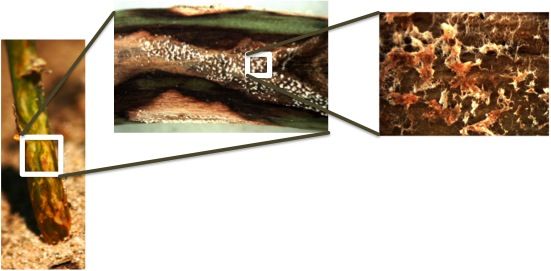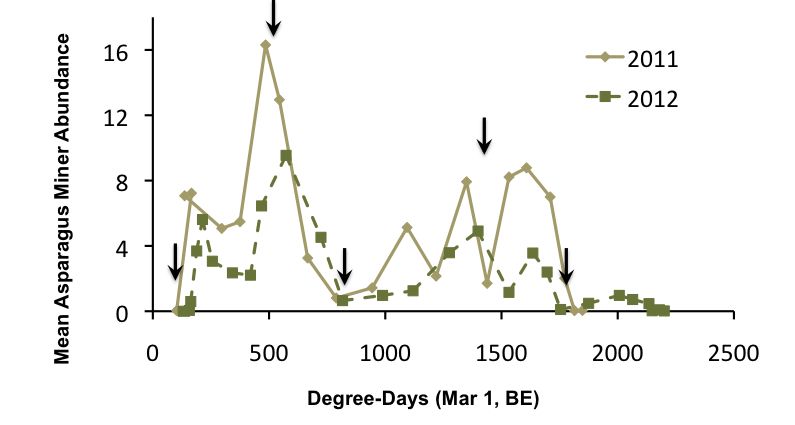One of the avenues of research being pursued in the Szendrei lab involves integrated pest management of the asparagus miner (Ophiomyia simplex (Loew), Diptera: Agromyzidae). The asparagus miner is a putative vector for pathogenic species of Fusarium fungi (see Figure 1), which are the causative agents for “early decline syndrome” in asparagus fields. Fusarium can decrease the life span of an asparagus field by 5-8 years. Newly planted asparagus fields are especially vulnerable to asparagus miner attack, and the immature stages are challenging to control because of its hidden inside the stem of the plant. While there has been much research looking into controlling the fungi, very little has been devoted to the asparagus miner.
Our lab is looking at various ways to effectively monitor and manage asparagus miner populations as part of an integrated pest management program. We have three main pillars to this research. First, we are developing a degree-day model to accurately predict important phenological events in the life cycle of the asparagus miner (see Figure 2).
This involves elucidating the lower developmental threshold for the asparagus miner, and incorporating it into a model that can help guide grower’s decisions about the timing of pesticide applications. The model will allow growers to access real-time weather conditions using the MSU Enviro-weather network in the state (see Figure 3) and determine if they are at a point when the asparagus miner is vulnerable. In the end, this will save growers money and time by reducing the overall number of pesticide applications, as well as spare the nontarget ecological costs associated with insecticide usage. Concurrently, the lab is also investigating more targeted, systemic pesticides which may be able to control the immature stages of the asparagus miner. Field trials with these chemicals are ongoing, and once effective chemistries are found, they may also be used in conjunction with the degree-day model to manage miners.

Figure 1. The association between asparagus miner caused mines (left) and pathogenic Fusarium fungi (center and right) on an asparagus stem.

Figure 2. The population dynamics of the asparagus miner through the season based on degree-days, a measure of “thermal time”, which is vital in the development of an insect. Notice the relatively good correspondence between the years. Black arrows indicate important phenological events, Left-Right: beginning of flight, first population peak, beginning of second generation, second generation peak, end of flight.
